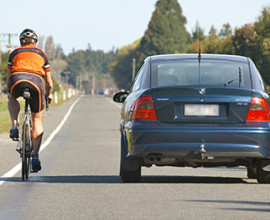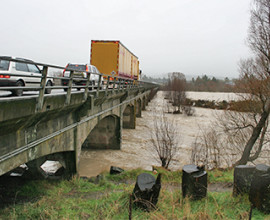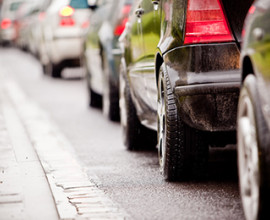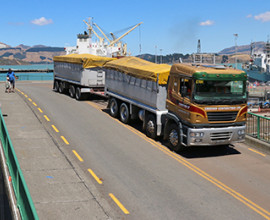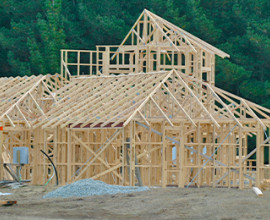Transport network maintenance
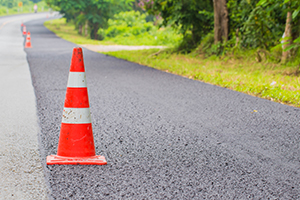 Canterbury has the largest road network of any region in New Zealand by far, and maintaining this network is important for the safety of all road users.
Canterbury has the largest road network of any region in New Zealand by far, and maintaining this network is important for the safety of all road users.
While the vast length of our roadways means that keeping them up to standard costs a lot, the economic benefits they provide linking primary industries to our ports is critical for the Canterbury region.
Maintenance of the existing transport network, and additional investment in response to changes in how roads are being used, is critical to sustaining the region's prosperity.
Roads in our region
Canterbury has approximately 16,000 kilometres of roads including 1,330km of State Highways and 14,640 km of local roads. Approximately 9,970km of road is sealed and 6,080km unsealed.
Major routes include:
- State Highways 1, 7, 8, 71, 73 - 80, 82, 83.
- Inland Scenic Route 72.
- Inland Kaikōura Road.
- Pareora Gorge Road.
Maintenance on state highways is carried out by Waka Kotahi, while other roads are looked after by district authorities and their roading contractors.
Types of maintenance
District authorities and Waka Kotahi carry out maintenance across the region to keep our roads safe, including:
- sealed road resurfacing
- unsealed road metaling
- road pavement rehabilitation
- drainage maintenance
- footpath maintenance.
Why maintenance is important
Land use, working and commuting patterns, and tourism numbers are predicted to change over the next 10 years. These changes in land use, population, freight movement, and tourism will increase maintenance costs, safety issues, a lack of resilience to shocks, and a lack of sustainable transport options.
Examples of increased demand and changing use include:
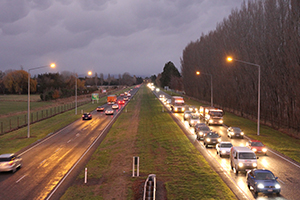 A 12 percent increase in December quarter guest nights in Canterbury visitor accommodation in the 10 years from 2010 to 2019.
A 12 percent increase in December quarter guest nights in Canterbury visitor accommodation in the 10 years from 2010 to 2019.- A 15 percent increase in heavy vehicle kilometres travelled over Canterbury's State Highways between 2007/08 and 2016/17.
- An increase in overall vehicle kilometres travelled by 17 percent (local roads) and 20 percent (State Highways) between 2007/8 and 2016/17. In some districts this increase was much higher – by 233 percent in Kaikōura, 78 percent in Waimakariri and 45 percent in Selwyn.
- The population in Canterbury, and some areas in particular, has grown much faster than the national average. From 2013 to 2018, Selwyn's population grew by 33 percent, Waimakariri's by 16 percent and Mackenzie's by 9 percent.
The impact of these increases is evident in maintenance spending on the network, which has almost doubled over the last 10 years. These changes in network use are expected to continue in addition to freight volumes and the general population.
Maintenance also helps contribute to reaching the goal of Road to Zero by making roads safe and reducing the harm caused on them.
Maintenance spend
Maintenance of the existing transport network, and additional investment to respond to changes in how roads are being used, is therefore critical to sustaining the region's prosperity.
Approximately $200 million per year is spent annually on maintaining Canterbury's extensive road network. One of the aims of the Regional Transport Committee is to ensure a sustainable approach to funding and maintaining our existing networks.
For every dollar spent by local councils on road maintenance and renewals, central government through Waka Kotahi matches that based on a funding assistance rate. This funding comes primarily from road user charges and fuel taxes.
The shift to a low emissions transport system means that without change there will be less income from these sources so it's important that the funding system is reviewed and improved.
Over the 10-year period of the RLTP (2021/22 to 2030/31) it is projected that $2.5b will be spent on road maintenance in Canterbury. Of this, 69 percent ($1.7b) has been allocated to local road maintenance by the region's district councils. The remaining 31 percent ($790m) is allocated to State Highway maintenance and is the responsibility of Waka Kotahi.
How does this relate to me?
Our roads provide vital economic links between towns, cities, and ports. Rates paid by residents from across Canterbury help fund maintenance to keep these roads safe, allowing us to:
- get around smoothly and safely (see graphs below)
- use dedicated foot and cycle paths
- have reduced vehicle wear and tear
- receive goods and services on time.
Annual proportion of travel on 'smooth' sealed roads
Waka Kotahi sets thresholds for the smoothness of roads based on their network classification. This data shows the percentage of travel (vehicle kilometres travelled) on roads smoother than the threshold for each road grouping across Canterbury. This is a quantitative measure of the road quality/amenity experienced by road users. 'Smooth' travel exposure (STE) data is from the Waka Kotahi Road Efficiency Group.
The proportion of travel completed on 'smooth' sealed State Highways in Canterbury remains relatively static across all road types. Regional roads have consistently been the smoothest, while high volumes roads have been the least smooth, but are steadily improving. Primary collector, arterial and national roads have all seen reductions in smoothness over recent years.
Local roads in Canterbury provide varying levels of smoothness, with high volume and national roads consistently being the smoothest to travel on. Regional and arterial roads have shown a steady improvement in smoothness, while the smoothness of low-volume roads has been reducing in recent years.

